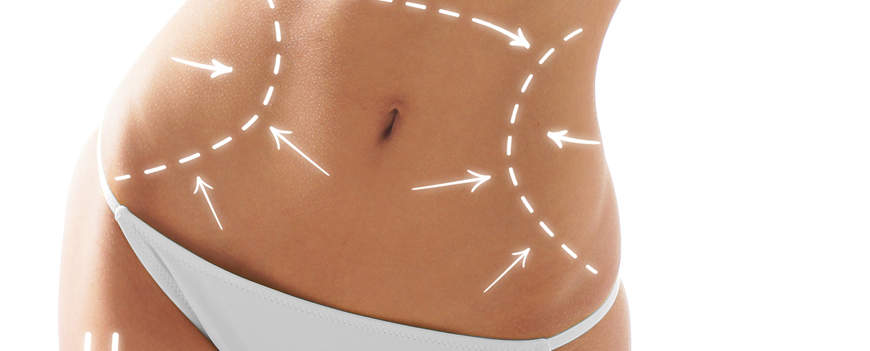

Fat Reduction
What is body fat? A layer of fat occurs over most of the body. The primary functions of this fat layer is to provide thermoregulation, protection against mechanical trauma, body contour and filling of body space. Most importantly, this fat layer is a source of energy. Adipose tissue (fat tissue) is loose connective tissue composed of adipocytes. It is technically composed of roughly only 80% fat. Its main role is to store energy in the form of lipids, although it also cushions and insulates the body. Subcutaneous fat is found just beneath the skin and has no effect on one’s health as opposed to visceral fat which is found in the peritoneal cavity packed between the organs (stomach, liver, intestines, kidneys, etc.) and is linked to metabolic disturbances, such as an increased risk for cardiovascular diseases and type 2 diabetes. While visceral fat can only be reduced by diet and exercise, subcutaneous fat is more resistant to diet and exercise, and therefore it can be treated medically. There are a number of non-invasive techniques, with various mechanisms of action, for reducing localized subcutaneous adipose tissue. Cryolipolysis produces cold-induced apoptosis of adipocytes, while thermal approaches include radiofrequency (RF) energy, which triggers apoptosis of fat cells, and high-intensity focused ultrasound (HIFU), which causes coagulative necrosis and cell death. Dr. Banki Uses Ultrashape power system to get rid of unwanted subcutaneous fat tissue. The UltraShape Power system works by emitting acoustic waves of focused ultrasonic energy (200 ± 30 KHz frequency) that converge into a confined focal volume underneath the skin, thereby, targeting only subcutaneous fat at a controlled depth. Unlike traditional ultrasound technology, UltraShape Power’s energy transmits pulsed ultrasound, allowing control over temperature elevation. Fat destruction occurs instantly, selectively and by exerting a non-thermal effect, using mechanical energy to produce cavitation, leading to fat cell lysis without an effect on the surrounding nerves and connective tissue. Fat Clearance A common concern regarding noninvasive fat reduction is removal of the destroyed fat cells without an increase in liver fat content. In a clinical study by Teitelbaum et al., the blood laboratory tests, following a series of UltraShape treatments, demonstrated that hepatic function remains unchanged with no clinically significant changes in lipid profile. During the UltraShape procedure, the membranes of the fat cells are disrupted. The fat cell content, primarily composed of triglycerides, is dispersed into the interstitial fluid among the cells and then transported by the body’s natural processes to the liver. The liver makes no distinction between the fatty acid byproducts of the UltraShape procedure and fat originating from consumed food. Fat metabolites are processed in the liver in the same manner as fat originating from digested food, and both types of fat are removed via the body’s natural mechanisms - the lymphatic, venous, and immune systems. Safety Although non-invasive body contouring treatments are reported to be safe, discomfort and severity of adverse effects differ with the various techniques. Pain, bruising, tenderness, paresthesias, neuropraxias, burns, scarring and fat atrophy have all been reported with several devices currently on the market. Due to its mechanical mechanism of action, UltraShape treatment was found to be safe and well tolerated, in a multi-center study, with minimal or no discomfort during or after the focused ultrasound procedure, and no reports of hematoma, fluid build-up, or subcutaneous bleeding.



